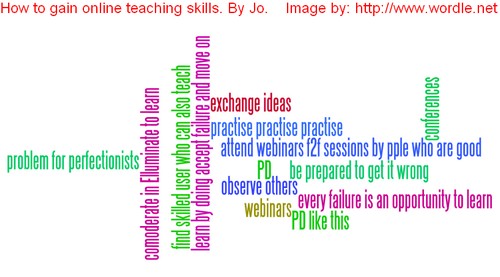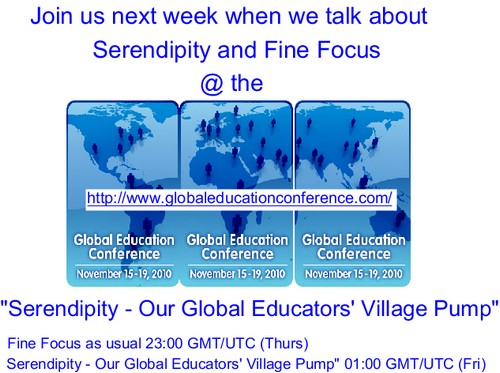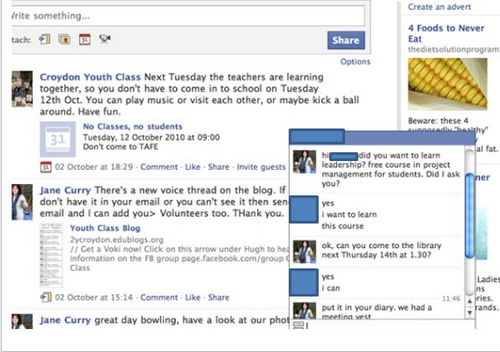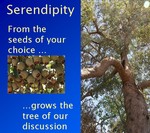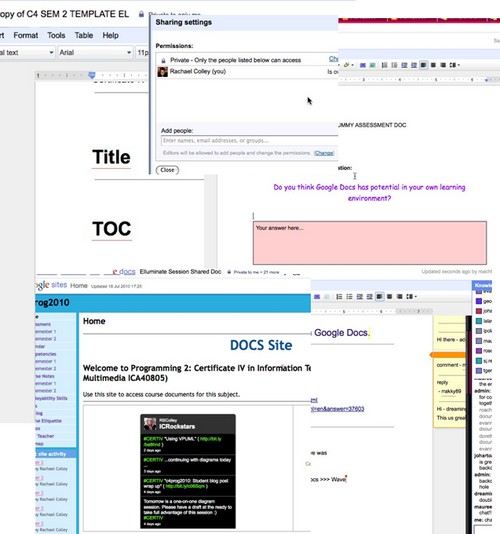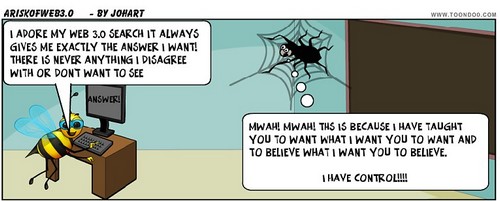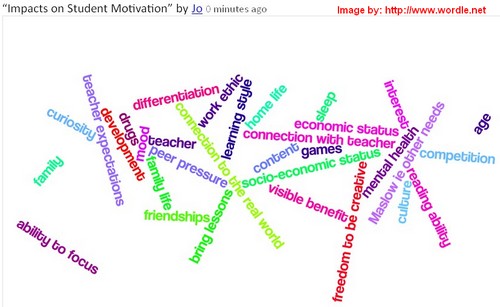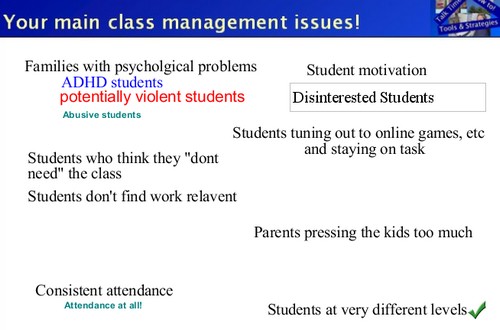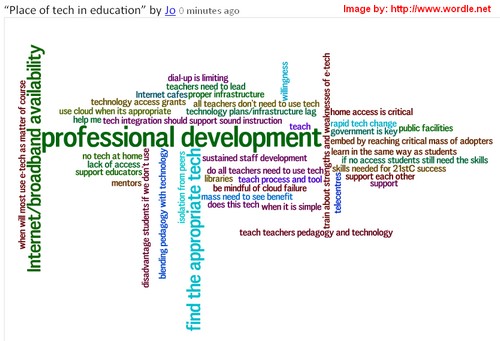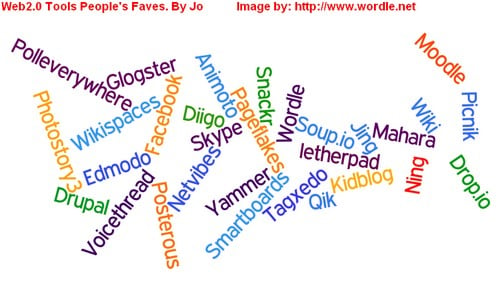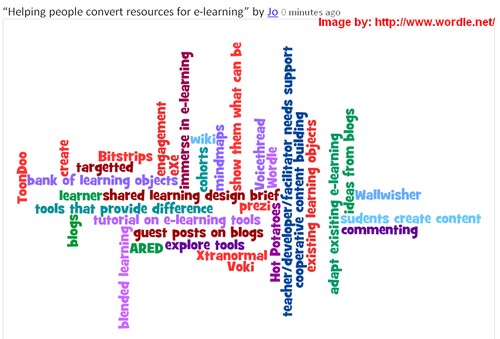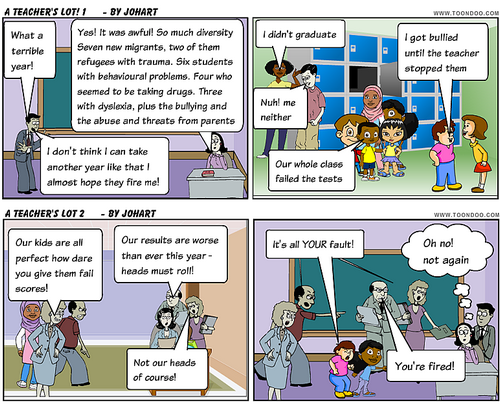Introduction
For this recorded Serendipity unconference webinar we took a brief look at the skills needed for online teaching and at how we could gain those skills. Unusually for our sessions all of us attending were based in Australia – I suspect this was because most of the USA has just had a clock change with clocks going back one hour. Changes to and from “summer time” always have an impact on the geographical locations of our attendees for a couple of weeks.
The Session
We used whiteboard and text chat a lot during this session as well as audio because we had people without microphones, so it was very much a blended session. Lots of ideas and suggestions were made on the whiteboard both for the skills needed and how to gain them.
From my perspective this session was particularly interesting for two reasons:
- at the moment my teaching is entirely online with regional students that I never meet
- we didn’t initially seek a common interpretation of teaching online so this meant that in discussion we “blurred the edges” a bit and went partly into the skills needed to use tech in teaching
This is a good thing for me to reflect on as I often suggest once a topic is chosen that we seek a common interpretation before we start the discussion. However in unconference webinars such as Serendipity should I even be doing this? What do you think?
Conclusion
This session was fun – we went a bit feral at the end and played with Elluminate giving everyone Moderator so that they could see the extra tools available to moderators.
Exciting News – Upcoming Conference!
Remember to check out the sessions at the Global Education Conference happening all of this coming week. There is no registration required you just click on the Elluminate link (these will be available from the session information).
The theme is “globally connected education” and is totally cross-sectoral aimed at anyone involved in any way in education and/or training. There are sessions on many different aspects of online collaboration and connection betweeen students, educators and the wider global community.
There are around 350 presenters from all over the world (including a session about our Serendipity/Fine focus webinar series at 01:00 GMT/UTC on Friday – one hour after the end of the usual Fine Focus session).
We would love your input/participation in the session, especially so if you have participated in the Serendipity/Fine Focus series of webinars as they have evolved. This is an opportunity for us to look at where we are and consider our future direction!
Our Next Session
 Our next Webinar is an Edublogs “Fine Focus” session. This week in “Conferences – they are a’changing” will be a discussion about the changing face of conferences and some of the pro’s and con’s of the old and new style of conference.
Our next Webinar is an Edublogs “Fine Focus” session. This week in “Conferences – they are a’changing” will be a discussion about the changing face of conferences and some of the pro’s and con’s of the old and new style of conference.
.Join us on Thursday Nov 18th at 23:00 GMT/UTC (6pm USA EST, Midnight CET) or Friday Nov 19th at 7am West Aus, 10am NSW, depending on your timezone – in the usual Elluminate room
In the Future
If you are a regular visitor to our webinars you will know that we alternate “Fine Focus” sessions on specific topics with “Serendipity” the unconference sessions where we choose a topic by poll at the start of the session. Sometimes the very fact of being asked for “hot topics” or other ideas for discussion or learning tends to make our minds blank. This has prompted me to start a Serendipity Wallwisher for topic suggestions. Please visit the wall and add your ideas for Serendipity topics so that we have more choices to consider. Some of these ideas might also form the basis for future “Fine Focus” sessions.

